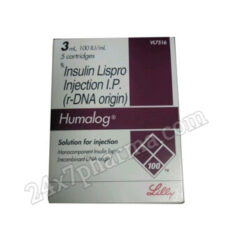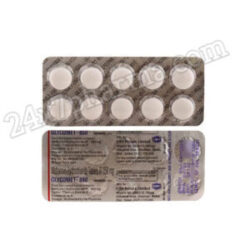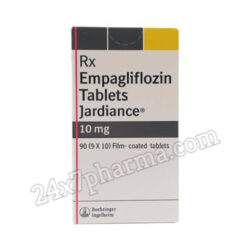Introduction of Ozempic
The pre-filled injection form of Ozempic 1mg solution is currently available.
Semaglutide is the active ingredient in Ozempic. It can help prevent heart disease and assists your body in lowering blood sugar levels only when levels are too high.
If diet and exercise alone cannot control your blood sugar levels and you cannot take metformin (another diabetes medication), you may use Ozempic alone. Alternatively, you may combine Ozempic with other diabetes medications if those medications are insufficient to control your blood sugar levels.
These additional medicines may include insulin or oral antidiabetics such as metformin, thiazolidinediones, sulfonylureas, or SGLT2 inhibitors.
As directed by your doctor, pharmacist, or nurse, you must stick to your diet and exercise routine.
What is Ozempic 1mg?
Semaglutide injection, also referred to as Ozempic, is a prescription injectable that comes in dosages of semaglutide 0.5 mg, semaglutide 1 mg, or semaglutide 2 mg. It serves the following functions:
-
- It is used to improve blood sugar (glucose) control in persons with type 2 diabetes mellitus when combined with food and activity plans
- It is indicated for individuals with type 2 diabetes mellitus who have developed heart disease in order to reduce their risk of serious cardiovascular events, such as heart attacks, strokes, or death.
It is yet unknown if Ozempic is appropriate for those with a history of pancreatitis. Ozempic’s safety and effectiveness in people under the age of 18 have not been demonstrated, and it is not recommended for use by those who have type 1 diabetes.
The contents of Ozempic 1mg
-
- Semaglutide is an active chemical. Semaglutide 1.34 mg is contained in one milliliter of injectable solution. In one pre-filled pen, 4 mg of semaglutide is present in a 3 ml solution. In 0.74 ml of each dose, semaglutide 1 mg is present.
- The remaining components include sodium hydroxide/hydrochloric acid, propylene glycol, phenol, disodium phosphate dihydrate, and water for injections (for pH adjustment).
Read More : How People With Diabetes Are Getting By During the Ozempic Shortage
Directions
How Ozempic 1mg is given
-
- Ozempic is administered through intramuscular injection (subcutaneous injection). Never administer it through a vein or muscle.
- The front of your thighs, the front of your waist (abdomen), or your upper arm are the finest sites to administer the injection.
- Your doctor, pharmacist, or nurse will demonstrate how to use the pen before you use it for the first time.
When to use Ozempic 1mg
-
- If possible, you should take this medication once every week on the same day.
- Regardless of meals, you can inject yourself anytime during the day.
It is advised to put the chosen weekday (for example, Wednesday) on the carton and to write the date on the carton each time you have injected the medication to help you remember to do so only once a week.
If necessary, you can switch the day of your weekly injection of this medication, provided it has been at least three days since your previous shot. Continue with a once-weekly dosage after choosing a new day.
Strengths & Alternatives of Ozempic Medicine
Ozempic has a various strengths such as:
Alternative of ozempice medicine such as:
Side Effects of Ozempic 1mg
Like many medicines, this one has potential adverse effects, albeit not everyone will experience them.
Serious side effects
Common (may affect up to 1 in 10 people)
-
- Complications of diabetic eye illness (retinopathy) – while taking this medication, you should let your doctor know if you encounter any eye issues, such as changes in vision.
- Unusual (may impact up to 1 in 100 people) (may affect up to 1 in 100 people)
- Acute pancreatitis, an inflammation of the pancreas, may result in severe, persistent back and stomach pain. If you suffer such symptoms, you should visit a doctor right away.
Rare (may affect up to 1 in 1 000 people)
-
- Extreme allergy responses (anaphylactic reactions, angioedema). Suppose you experience symptoms like breathing issues, swelling of the face, lips, tongue, or throat, difficulty swallowing, or a rapid heartbeat. In that case, you should seek immediate medical attention and immediately contact your doctor.
Other side effects
Very common (may affect more than 1 in 10 people)
-
- Nausea is a common side effect that typically passes with time.
- In most cases, diarrhea heals with time.
Common (may affect up to 1 in 10 people)
-
- Being sick (vomiting)
- When this medicine is combined with another antidiabetic drug, low blood sugar (hypoglycemia) may occur. Common blood sugar symptoms could appear suddenly. These symptoms can include a chilly sweat, cool pale skin, headache, rapid heartbeat, hunger or nausea, vision changes, feeling weak or exhausted, uneasiness, worry, confusion, difficulty focusing or shaking. If you also take sulfonylurea or insulin, you run a higher risk of experiencing low blood sugar. Before you begin using this medication, your doctor may lower the dose you already take of other medications.
- Indigestion
- Inflamed stomach (‘gastritis’) – the signs include stomach ache, feeling sick (nausea), or being sick (vomiting)
- Reflux or heartburn – also called ‘gastro-esophageal reflux disease (GERD)
- Stomach pain
- Bloating of the stomach
- Constipation
- Burping
- Gall stones
- Dizziness
- Tiredness
- Weight loss
- Less appetite
- Gas (flatulence)
- Increase of pancreatic enzymes (such as lipase and amylase).
Uncommon (may affect up to 1 in 100 people)
-
- Food or beverage flavor changes
- Rapid pulse Injection site reactions can cause bruising, discomfort, itchiness, irritation, and rash.
- Rash, itching, or hives are examples of allergic reactions.
References:
- Ozempic – Drugs.com










Reviews
Clear filtersThere are no reviews yet.